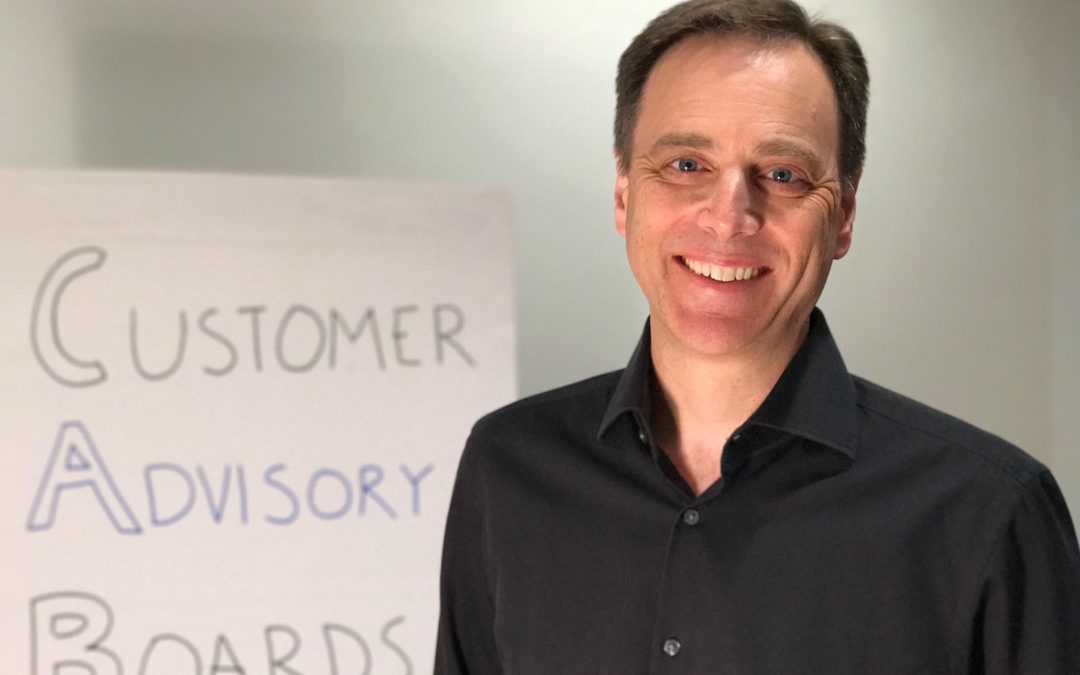This year we celebrate 15 years as KickStart Alliance and our Customer Advisory Board practice. I am very proud to have worked with, and learned from, so many companies and business leaders over the years. It’s humbling, too, because success is built on relationships, trust, and integrity. And to be successful you must put your customer’s needs and success ahead of your own. If there is a key to success, I think it has been that we all took that notion to heart. And now 15 years later, it’s still working.
My first Customer Advisory Board
In 2002 there was no such thing as a CAB — a least not in the way we think of them today. Days after we launched KickStart Alliance, I received a call from a good friend and business colleague of many years. He was the CMO of Aspect Telecommunications. “Mike, I want to hold a customer advisory board next month, and I want to have it facilitated. Could you do that for us?” “Of course, I’d be happy to,” I replied. As I put down the phone I had a stark realization: What the heck is a “customer advisory board”?
Sure, I knew what those words meant individually. Customer. Advisory. Board. But what does it mean when you put them together? I decided to find out. What I quickly learned was the following:
- No one knew what it was.
- There was no literature. No books. No best practices.
- I’d have to carve my own path.
I sat down with the CMO and asked about his vision. I shared my own experience having facilitated a variety of customer meetings at HP and Sun earlier in my career. In the end, I decided to follow his direction and my own instincts to:
- Create a safe environment where a small group of 12 customers could have an closed-door conversation about strategy, not product features.
- Drive an agenda about business issues, not minutia.
- Facilitate an engaging dialog where we asked a few strategic questions and we let the customers do most of the talking.
This turned out to be a formula for great success. Judging from the responses from the attending customers, they had never participated in a strategy-level focus group before — at least one where the host company didn’t do a bait-and-switch to turn it into a sales meeting. They loved it. “Finally, we have a vendor who wants to be a true partner. You care about what we think. And you listen.”
Building the CAB Resource Center
I quickly found Silicon Valley had an appetite for this unique type of customer meeting. And, people had many questions:
- What is a customer advisory board?
- Why would customers want to attend?
- Can we build a CAB even if we don’t have relationships with the executives we want to invite?
- How do we execute one and not embarrass ourselves?
- What if it turns into a customer complaint session?
I found myself writing articles and speaking to groups of interested leaders about CABs. And a CAB practice was born. Since those early days, I’ve learned a lot about what works and what does not. How many customer meetings have I facilitated and/or coached? I lost track after 100. In 2013 I decided that I wanted to share my formula so marketers everywhere could learn to replicate this same success. That’s why I wrote the two-volume definitive guide to CABs: The Flip Chart Guide to Customer Advisory Boards.
CAB ROI and competitive differentiation
Today, CABs have become much more common. The conversation between company leaders and their best customers is quickly becoming one of their best assets. I can tell you about a company that used their CAB to discover how to energize their sales. They successfully doubled the annual revenue from CAB members in just 12 months. I can also tell you about how a company gained early awareness of industry rumblings that would dramatically impact their supply chains and cripple the host company’s business, thanks to their CAB. The lessons learned at that meeting led to reprioritization of the host company’s products and services and resulted in revenue growth in an industry with declining margins.
When I’m asked about the ROI of CABs by sales leaders, I cannot ignore the urgency they have to sell more products. But the CAB is not about selling any specific product or service. Oh, it is about selling. But it’s about selling you, your leadership team, and the way you do business. It’s about using the CAB not as a sales tool, but as a way to gather strategic insight. It has more to do with branding and market research than direct selling. Those companies who have figured this out are the ones who are using their CAB to identify and strengthen their truest competitive differentiators.
This is what I have learned in my 15 years leading KickStart Alliance’s CAB practice.
With a specialty in CABs, Mike Gospe is a professional facilitator with more than 15 years of CAB experience. He’s helped some of today’s most innovative companies deliver more than 100 world-class CAB meetings. He leads KickStart Alliance‘s CAB practice. Contact Mike

